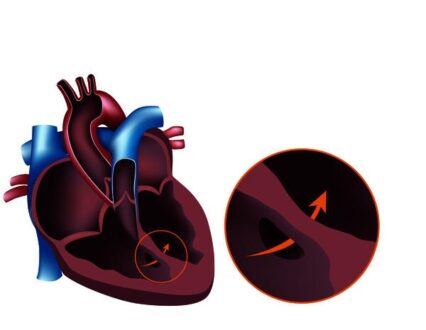Learn all about holosystolic murmur symptoms, causes, sound and its treatment. It is important to remember that a heart murmur is a physical finding and is not a disease or structural heart problem. Rather it is the sound that is made because of a potential blood flow problem within the heart.
Normally, your mitral valve closes completely when the lower left chamber of your heart contracts. It stops blood from flowing back into your upper left chamber. If part of that valve balloons out so it doesn’t close properly, you have mitral valve prolapse. This causes a clicking sound as your heart beats. It’s fairly common and often not serious. But it can lead to the blood flowing backward through the valve, which your doctor may call regurgitation.
Your mitral and aortic valves are on the left side of your heart. If they narrow, which doctors call stenosis, your heart has to work harder to pump blood to the rest of your body. If left untreated, it can wear out your heart and lead to heart failure. You might be born with this. It can also happen as part of aging, or because of scarring from infections such as rheumatic fever.
One in three elderly people have a heart murmur because of the scarring, thickening, or stiffening of their aortic valve. That’s aortic sclerosis. It’s usually not dangerous, since the valve can work for years after the murmur starts. It’s usually seen in people who have heart disease. But the valve can narrow over time. This is called stenosis. It can lead to chest pain, shortness of breath, or you may pass out. Sometimes, the valve needs to be replaced.
Maintaining a life-long heart-healthy lifestyle may help prevent some heart valve issues. These lifestyle opportunities include keeping blood pressure, cholesterol, and diabetes under control. It is a positive choice not to smoke. Regular exercise and weight management also contribute to a healthy heart.
What is Holosystolic Murmur?
Holosystolic murmurs begin at the first heart sound (S1) and continue to the second heart sound (S2), as illustrated in the phonocardiogram. Typically high-pitched, these murmurs are usually caused by ventricular septal defect, mitral regurgitation or tricuspid regurgitation.
Holosystolic Murmur Symptoms
An abnormal heart murmur may cause no obvious other signs or symptoms, aside from the unusual sound your doctor hears when listening to your heart with a stethoscope. But if you have these signs or symptoms, they may indicate a heart problem:
- Skin that appears blue, especially on your fingertips and lips
- Swelling or sudden weight gain
- Shortness of breath
- Chronic cough
- Enlarged liver
- Enlarged neck veins
- Poor appetite and failure to grow normally (in infants)
- Heavy sweating with minimal or no exertion
- Chest pain
- Dizziness
- Fainting
Holosystolic Murmur Causes
Holosystolic murmurs can be caused due to:
- Anemia
- High blood pressure
- Overactive thyroid
- Fever
A murmur could also be a problem with a heart valve. The valves close and open to let blood flow through the heart’s two upper chambers called the atria and two lower chambers the ventricles. Valve problems include:
- Mitral valve prolapse
- Mitral valve or aortic stenosis
- Aortic sclerosis and stenosis:
- Mitral or aortic regurgitation: In this case, regurgitation means the blood is going the wrong way through your mitral or aortic valve and back into your heart. To counteract it, your heart must work harder to force blood through the damaged valve. Over time, this can weaken or enlarge your heart and lead to heart failure.
- Congenital heart defects
Holosystolic Murmur Sound
Heart murmurs are sounds during your heartbeat cycle such as whooshing or swishing made by turbulent blood in or near your heart. These sounds can be heard with a stethoscope. A normal heartbeat makes two sounds like “lubb-dupp” (sometimes described as “lub-DUP”), which are the sounds of your heart valves closing.
Holosystolic Murmur Treatment
Holosystolic murmurs treatment is not required normally. Heart murmur generally doesn’t require treatment because the heart is normal. If innocent murmurs are the result of an illness, such as fever or hyperthyroidism, the murmurs will go away once that condition is treated. If you or your child has an abnormal heart murmur, treatment may not be necessary. Your doctor may want to monitor the condition over time. If treatment is necessary, it depends on what heart problem is causing the murmur and may include medications or surgery.
Holosystolic Murmur vs Pansystolic
A holosystolic murmur is one which lasts from end of S1 to the beginning of S2. While pansystolic is one which lasts from beginning of S1 to the end of S2 and therefor obscures these heart sounds. The difference between them is academic in terms of diagnosis. Pansystolic murmurs are often louder and significant then holosystolic murmurs.
 Health & Care Information
Health & Care Information 


